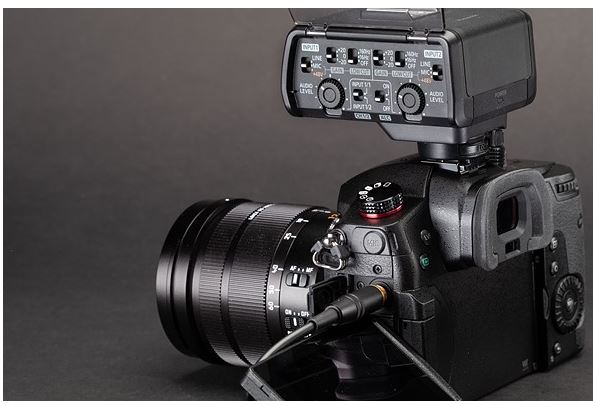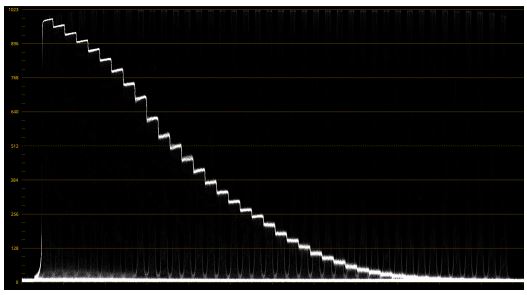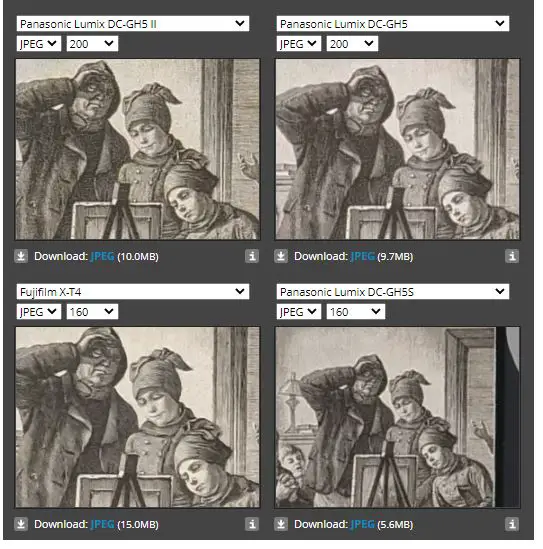
The Panasonic Lumix DC-GH5 Mark II is an updated version of the company’s more video-focused Micro Four Thirds camera; the GH5. It offers greater capabilities over the original model and will eventually be sold alongside a high-end GH6 model, the development of which was announced at the same time.
The GH5 II gets an updated ‘Venus’ processing engine from the full-frame S1H, allowing it to capture 4K 10-bit images at 50 or 60 frames per second and promising improved autofocus. It retains the same sensor as before, but now with an anti-reflective coating to better control flare.
Key Specifications
- UHD or DCI 4K 10-bit 4:2:0 capture at up to 60p with no crop
- UHD or DCI 4K 10-bit 4:2:2 capture at up to 30p with no crop
- Image stabilization rated at up to 6.5 stops
- V-Log L included as standard
- 3.0″ 1.84M-dot rear touchscreen
- 3.68M-dot EVF, with 0.76x magnification and up to 120Hz refresh
- Live streaming options via Wi-Fi or smartphone (Full HD)
- Anamorphic capture and support tools
- Improved AF with face/eye/body detection
- USB-C socket with PD-compatible power and charging
As in previous cases, Panasonic is using the ‘Mark II’ nomenclature to indicate that this is an updated version of the GH5, not a completely new camera in the same range. The company believes that not everyone will need the additional capabilities of the more expensive GH6 and that an updated GH5 will still make sense for some users.
What’s new
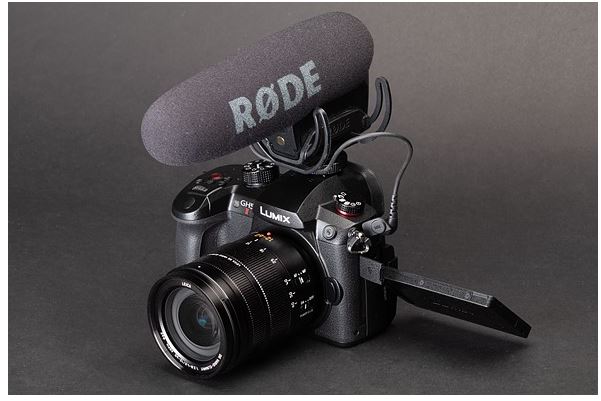
Autofocus
Using a more powerful processor allows the GH5 II to offer the same face/eye / body and animal recognition AF capabilities as the latest Panasonic cameras. But, in addition to more sophisticated recognition algorithms, the camera can also read its sensor faster, which means that it can run its AF system at 48 frames per second when recording 24p images. This means that the AF system receives more frequent updates from the scene, something its depth-from-blur system benefits from significantly.
Enhanced video capabilities
The new processor also expands the video modes that the GH5 II can offer, opening up the option to record 4: 2: 0 4K 50 / 60p 10-bit footage (the original GH5 could only capture 60p footage with 8-inch accuracy). bits), which makes it much more useful for firing registers. Higher frame rate 10-bit footage is recorded using the H.265 codec.
| Panasonic GH5 II’s video modes (MOV format) | ||||
|---|---|---|---|---|
| Resolution | Frame rates | Bit depth/chroma sampling | Codec | Bitrate |
| C4K (4096 x 2160) UHD (3840 x 2160) ‘4K’ Anamorphic* (3328 x 2496) | 59.94* / 50 | 10-bit 4:2:0 | H.265 Long GOP | 200 Mbps |
| 29.97 / 25 / 24 / 23.98 | 10-bit 4:2:2 | H.264 All-I | 400 Mbps | |
| “ | H.264 Long GOP | 150 Mbps | ||
| 59.94 / 50 | 8-bit 4:2:0 | |||
| 29.97 / 25 / 24 / 23.98 | 100 Mbps | |||
| ‘6K’ Anamorphic (4992 x 3744) | 29.97 / 25 / 24 / 23.98 | 10-bit 4:2:0 | H.265 Long GOP | 200 Mbps |
| Full HD | 59.94 / 50 / 29.97 / 25 / 24 / 23.98 | 10-bit 4:2:2 | H.264 All-I | |
| “ | H.264 Long GOP | 100 Mbps | ||
| “ | 8-bit 4:2:0 | |||
* ‘4K’ Anamorphic mode not available at 59.94p
Hybrid Log-Gamma is available in all 10-bit modes (marked in green)
In addition to faster frame rate 10-bit capture, the GH5 II also gets All-I capture for 29.97p and 23.98p, previously only possible for 24.00p. Anamorphic ‘4K’ footage, shot with the entire sensor region, is now available up to 50p.
In addition to the expanded video specification, the GH5 II also gets the video tools that Panasonic has developed for its latest models, including a red frame around the screen during recording, a wider selection of aspect ratio guides, and the ability to record videos in portrait orientation.
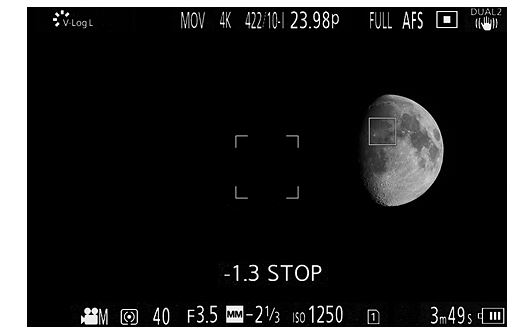
The Luminance Spot Meter is the smaller square on the display and lets you assess the exposure of the element underneath it.
The GH5 II also gets the S1H’s luminance point meter, which gives you an exposure rating in% IRE for a small, selectable region in the scene, or a rating relative to mid-gray (42 IRE) at stops, if you’re in V -Registration mode L.
Live streaming
The GH5 II includes more advanced live streaming options, allowing live streaming over the web, either via Wi-Fi or, following a future firmware update, via a USB connection to a phone smartphone or a wired LAN connection.
The camera can stream over Wi-Fi via a smartphone using the Lumix Sync app. Alternatively, you can use the Lumix Network Settings software for Mac or Windows to write the streaming settings to an SD card, which then allows the camera to connect and stream directly over a Wi-Fi network without going through a PC or smartphone, up to 1080 / 60p.
In doing so, the RTMP / RTMPS standard is used, so the camera can stream directly to YouTube, Facebook, or any other service that supports this protocol. It also means that ongoing support does not depend on Panasonic’s own software. Unlike many camera apps like webcam, this approach also includes camera audio.
A previously announced firmware update will add support for wired connections to facilitate higher quality and more stable connections, including the ability to connect directly to a smartphone via USB (Android only, initially). The camera can also be directly connected to a PC via a wired LAN using RTP / RTSP protocols. Panasonic says this update should arrive in late 2021.
Improved IS
The GH5 II’s in-body stabilization system is rated to deliver up to 6.5EV of compensation when measured using the CIPA standard test. This is 1.5EV more than the original GH5. Panasonic says this figure holds for longer focal length lenses with Dual IS 2 syncing with the system in the body.
New color modes
Panasonic has added two new color modes to the GH5 II: L.ClassicNeo, a ‘nostalgic’ profile with subtle saturation and contrast, and L.Monochrome S, a subtle monochrome mode that Panasonic says should suit portraiture.
The GH5 II also gains Cinelike D2 and Cinelike V2, the updated low-contrast and out-of-the-box cinema-style color modes (the GH5 has the stock versions of both). However, what is noticeable is that these do not result in an increase in base ISO, as does the full-frame ‘S’ series Panasonics, suggesting that they are not the versions designed to fit a range of additional dynamics.
This would make sense, as the GH5 II’s smaller sensor wouldn’t work well if exposure were reduced that way. We compared the Cinelike D2 curve of the GH5 II to that of the original GH5 later in the review and found that it does not match the profile of the same name on the S1H.
V-Log L
Interestingly, the GH5 II doesn’t get the extended 13-stop version of V-Log L that we saw in the BGH1 box camera module.

Difference Panasonic cameras use different regions of the V-Log curve (red). The GH5 II uses the blue region, which sees it branded as V-Log L; matching the GH5 and 5S. But then it would still be cross-compatible if it used the larger region used by the BGH1.
The whole design (and some of the possible drawbacks) of the V-Log system is based on using different parts of the same Log curve, depending on how much usable dynamic range the camera can record. This means that you can use the same LUTs on multiple cameras, the main thing that changes is the point at which the highlights are clipped.
However, despite this cross-compatibility by design and the increased DR (i.e. lower noise) that the new processing allows on the GH5 II, it has been given the 12-step version of V-Log L, to ensure that the GH5 and GH5 II behave consistently if fired side by side.
No Raw video output
Another interesting omission is the decision not to include the Raw output of the GH5 II. Panasonic says that removing all the processing that usually goes into camera footage means you’d have to do a fair amount of work with Raw footage, just to bring it up to the same standard and that there would be little to gain even if it did.
There are many reasons to believe this to be true: even the 12-step version of V-Log L will encode most of the sensor’s DR (10-bit register encoding is much more efficient than 12-bit linear, so which is unlikely to result in any significant loss of tonal precision), so is it really worth the extra work, if you mostly just get the ability to make bigger corrections to white balance?
How it compares

Updates to the GH5 II push it back into the position of being probably the best-spec crop sensor still / video hybrid on the market. While its core specs don’t look radically different from the Fujifilm X-T4 (which also has stabilization and a fully articulated display), the distinctions start to reveal themselves when you look at the details of the support tools provided and the durability. of each one. you can expect the camera to shoot.
| Panasonic DC-GH5 II | Panasonic DC-GH5 | Panasonic DC-GH5S | Fujifilm X-T4 | |
|---|---|---|---|---|
| MSRP at launch | $1699 | $1999 | $2499 | $1699 |
| Sensor size | Four Thirds | Four Thirds | Four Thirds Dual Gain | APS-C Dual Gain |
| Pixel count | 20MP | 20MP | 10MP | 26MP |
| Viewfinder | 3.68M-dot 0.76x mag Up to 120Hz | 3.68M-dot 0.76x mag | 3.68M-dot 0.76x mag | 3.68M-dot 0.75x mag Up to 100Hz |
| Rear screen | 3.0″ 1.84M-dot Fully articulated | 3.2″ 1.62M-dot Fully articulated | 3.2″ 1.62M-dot Fully articulated | 3.0″ 1.62M-dot Fully articulated |
| Image stabilization | Up to 6.5EV Lens Sync | Up to 5.0EV | None | Up to 6.5EV |
| Highest res 10-bit video | DCI/UHD 4K 60p, 4:2:0 DCI/UHD 4K 30, 4:2:2 (60p 4:2:2 over HDMI) | DCI/UHD 4K 30, 4:2:2 (60p 4:2:2 over HDMI) | DCI/UHD 4K 30, 4:2:2 (60p 4:2:2 over HDMI) | DCI/UHD 4K 60p 4:2:0 |
| Approx rec limits | — | — | — | 20 min (4K/60) 30 min (4K/30) |
| Log support | V-Log L (12-stop) | V-Log L (12-stop) Paid upgrade | V-Log L (12-stop) | F-Log |
| Anamorphic support | ‘4K’ up to 50p ‘6K’ up to 30p | ‘6K’ up to 30p | ‘4K’ up to 30p | No |
| Video tools | Zebras (x2) Focus Peaking Waveforms Vectorscope Lum spot meter B/cast safe rec Shutter angle Synchro scan Corrected Log display (w/ LUT upload) | Zebras Focus Peaking Waveforms Vectorscope B/cast safe rec Shutter angle Synchro scan Corrected Log display (w/ LUT upload) | Zebras Focus Peaking Waveforms Vectorscope B/cast safe rec Shutter angle Synchro scan Corrected Log display (w/ LUT upload) | Zebras Focus Peaking Synchro scan Corrected Log display |
| HDMI port | Full size | Full size | Full size | Micro |
| Battery life EVF/LCD (CIPA) | 410/410 | 400/410 | 410/440 | – / 500 |
| Weight | 727g | 725g | 660g | 607g |
| Dimensions | 139 x 98 x 87mm | 139 x 98 x 87mm | 139 x 98 x 87mm | 135 x 93 x 64mm
|
The camera that we cannot yet compare the GH5 II to is the upcoming GH6. Panasonic has made it clear that the top-end model will record 4K at up to 120p and 4: 2: 2 10-bit footage at up to 60p, with a 5.7K / 60p capture option, but we have no further details. , beyond the fact that it will cost around $ 2,500 at launch. This means that the GH5 II is repositioning itself as a more affordable option down the line.
Body and controls
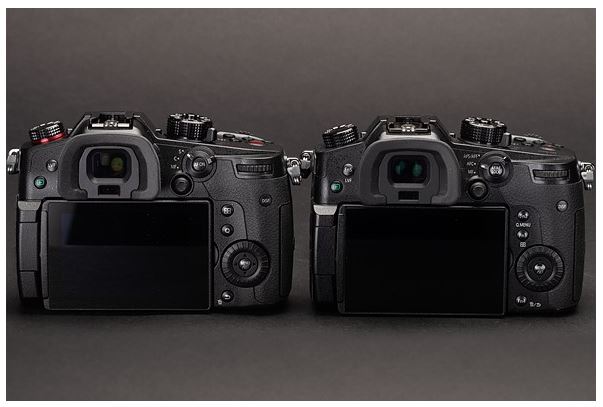
The body of the GH5 II is essentially the same as that of the GH5S, which itself is very similar to previous GH models. There’s a big red [REC] button on the top of the camera, along with dedicated (but customizable) buttons for WB, ISO, Exposure Comp, and now Photo Style. There is an AF joystick on the back of the camera and an AF drive mode switch surrounds a well-placed AF-On button.
As usual, the body feels solid and is designed to be dust and moisture-resistant. Like the GH5S, the twin card slots on the side of the camera can now make full use of V90 UHS-II SD cards.
Screen
The GH5 II has a slightly smaller rear screen than its predecessor: it is a 3.0 “panel instead of 3.2”. It is still a 3: 2 aspect ratio and has a slightly higher resolution. However, the most significant difference is that it can be made brighter than the previous screen, making it easier to operate the camera outdoors.
There is a slight overlap between the screen joint and the headphone jack, so it is worth positioning the screen before plugging it in, especially if the connector for your chosen cans is of the larger type.
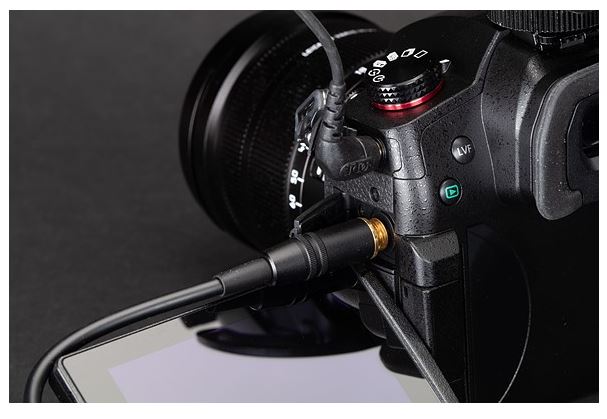
Viewfinder
There is an equally subtle change in the viewer. It’s still a 3.68M-dot OLED screen and is mounted behind the same optics, so it still offers 0.76X magnification. However, the higher speed of the camera allows it to refresh up to 120Hz, for a smoother and more responsive view.
Menus and displays
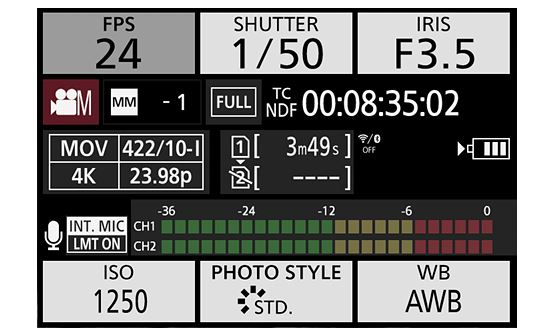
The GH5 II gains the ARRI/Varicam style info display, as well as updated menus
The GH5 II gets the updated menu system introduced in the GH5S. It’s a series of well-organized tabs with icons to point you and remind you where to find the option you’re looking for. It also includes the ability to create a filtered list of video modes, to make it quicker to access the ones you plan to use and to reduce the risk of selecting one you didn’t have.
The GH5 II also features the ARRI-style information panel display, first introduced on the GH5S. These changes to the interface and menus make it much easier to use a GH5 II in conjunction with a GH5S or S1H.
Battery
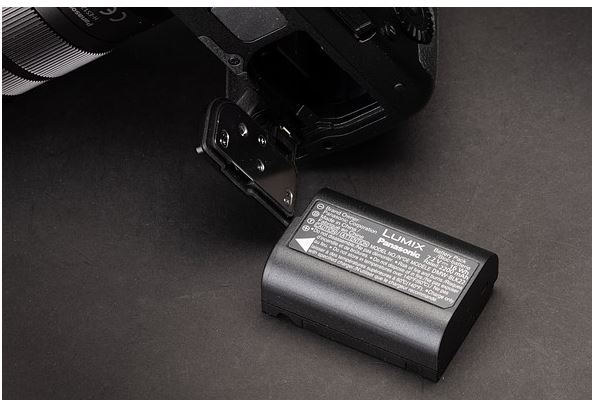
The GH5 II uses a new and more powerful battery: the DMW-BLK22. It is now rated at 2200 mAh, providing 16 Wh of capacity. Despite the increased capacity, Panasonic cites essentially the same battery life figures of 410 shots per charge (based on CIPA) as the original GH5.
The camera comes with an external charger that accepts both the new BLK22 and the older BLF19 packs from the GH5 and those batteries will continue to work in the Mark II, but not for that long. Alternatively, the GH5 II can be charged or powered via its USB-C socket, if the power supply supports USB PD.
First impressions
This section is based on our initial usage of the camera around its launch, and hence predates the rest of our testing and conclusions.
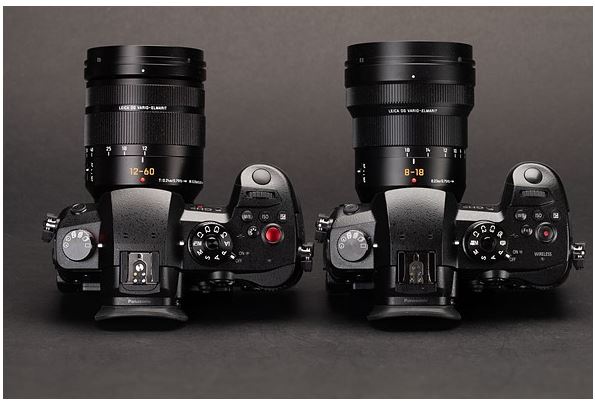
The GH5 II (left) is a refresh, rather than a radical reworking, of the GH5 (right)
How you react to the GH5 II probably depends on what you think ‘Mark II’ should indicate. If you’re expecting a full Canon-style camera rework, it might look a bit undercooked. But if you see it as a genuine mid-life update, with some spec improvements and enough processing power to make room for more firmware updates, then it looks pretty competent.
Its $ 300 price below the GH5’s original list price lends weight to the second interpretation. Yes, the selling price of the first-gen GH5 has dropped since its launch, but the decision to introduce a new version at that price means that it will sell for less than the original GH5 for most of its time on the market. Panasonic’s suggestion that the GH6 will launch at around $ 2,500 suggests that the GH5 II is destined to be the ‘affordable’ GH in a multi-camera range.
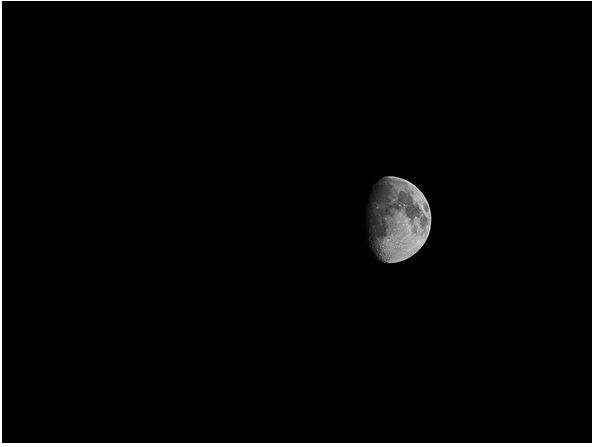
The GH5 II doesn’t represent some ambitious moon shot for Panasonic, but it’s more than a small step forward.
And this makes sense: the GH5 was the only mainstream still / video camera hybrid to offer 4K / 60p when it launched, whereas it is now a feature available on Fujifilm’s X-T4, Canon’s EOS R6, and various Sony’s. high-end. As such, the GH5 II is not as far ahead of the market as the original version was. In fact, even the addition of 10-bit 4K / 60p is not enough to make it unique.
However, what remains unusual is the level of support tools and features that are included. Few of the other cameras that can match the GH5 II’s video modes are as video-focused in their performance as the Panasonic. Dual Zebras and the Luminance Spot Meter make it easy to set the correct exposure. The option to set the shutter angle exposure time is still a valuable rarity in mass market cameras.
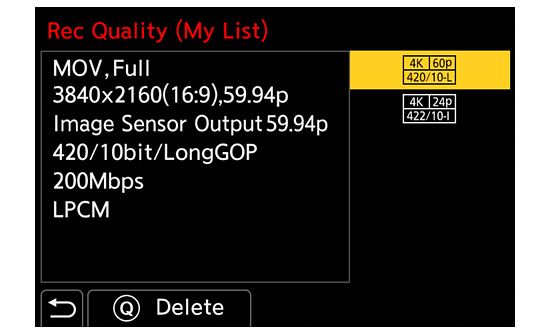
The ability to create a custom list of the modes you intend to use on a project, and control exposure in shutter angle (which you don’t need to adjust when switching from 24 to 60p capture), makes the GH5 II much quicker and easier to shoot.

